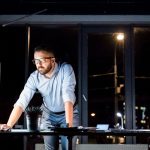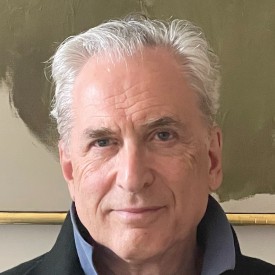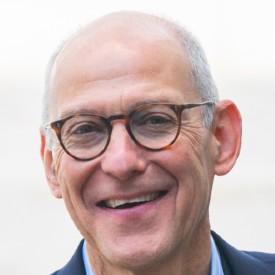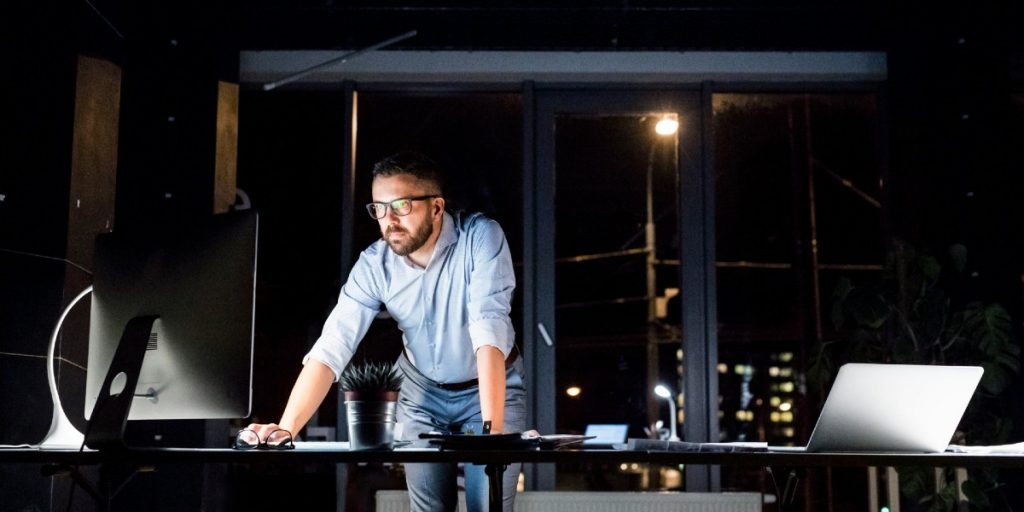Cady Coleman is a former NASA astronaut, scientist, public speaker, pilot, musician, wife and mother. She flew in space three times: twice aboard the Space Shuttle Columbia and a six-month expedition to the International Space Station.
Below, Cady shares five key insights from her new book, Sharing Space: An Astronaut’s Guide to Mission, Wonder, and Making Change. Listen to the audio version—read by Cady herself—in the Next Big Idea App.

1. Representation lets us reimagine what is possible.
When I was an undergrad at MIT studying to be a chemist, I attended a talk by Sally Ride, one of America’s first female astronauts. It had just been announced that she would be part of the crew for an upcoming space shuttle flight, making her the first American woman to fly in space.
Growing up in the 1960s, the image I had of astronauts—or any kind of explorer—couldn’t have been further from the woman before me that day. And I’m not just talking about images I saw in the media because I had one much closer to home. My dad, JJ Coleman, was a career naval officer who worked on the Navy’s SEALAB program, building the first underwater habitats, allowing men (in those days, it was all men) to live and work in the deep seas for extended periods. The spirit of exploration, the desire to understand fascinating and challenging environments, seemed normal to me as a child. But because none of the explorers I saw looked like me, it never occurred to me I could be one myself.
Seeing Sally Ride on the stage turned a possibility into a reality. She was young, bright-eyed, wearing a blue flight suit and black boots, with wavy brown hair like mine. She had an amazing job where she flew planes and practiced spacewalking, and she was an accomplished astrophysicist too. She might have seemed larger than life, but instead she was surprisingly relatable. Seeing Sally that day changed the trajectory of my life.
Representation is powerful. It doesn’t fix everything, but it changes the menu of options you feel you can reach for. The signals we get from our surroundings are enormously influential. What limitations have we internalized without knowing it? In her quiet, matter-of-fact way, Sally Ride shattered assumptions I wasn’t even aware I was carrying.
2. Embrace the paradox of having a mission.
We all need the occasional dose of cosmic perspective, the kind that comes from looking at the incredible images of space being sent back to Earth by the James Webb telescope. It’s a reminder of just how small we really are. But whenever I feel my own self-importance melt away, I’m struck by a paradox. Those James Webb images wouldn’t exist without our marvelous ingenuity as a species and the work of many individuals: engineers and astronomers who figured out how to build telescopes powerful enough to reveal the mysteries of the universe and how to launch those instruments into orbit. And, in some cases, ordinary people who trained for years to travel to space and release those telescopes in the right place. Those few individuals were tasked with an enormous responsibility. I know—I was one of them. During my second Space Shuttle mission, my team and I deployed the Chandra X-Ray Observatory, another member of NASA’s family of telescopes.
“Having a mission means you are a part of something much bigger than yourself, but at the same time, you play a vital role.”
Insignificant—but at the same time significant. This sums up for me what it feels like to be part of a mission. That term is everywhere. Companies have a “mission statement” or are “mission driven.” Self-improvement books push us to clarify our personal “missions.” As a term, it’s overused, but the idea behind it—that a mission is the authentic expression of an important goal—is powerful. Having a mission means you are a part of something much bigger than yourself, but at the same time, you play a vital role. Again, the paradox: it’s not about you, but it also depends on you.
3. The power of perspective.
“There is no ‘I’ in team.” It’s a phrase that sports coaches and motivational speakers love to throw around. It encourages team members to set aside personal needs, opinions, and goals to focus on what’s best for the collective purpose. But in my experience, an effective team that achieves its mission contains lots of ‘I.’ One of the most powerful contributions we can make to any team is our individuality.
The success of a team depends on recognizing and appreciating each member’s uniqueness. But it’s not just having complementary skills that can make a winning difference. It’s also the lenses through which we see the world. Every team member brings their own perspective to a mission, one that’s as distinct as their personality. Few things are more valuable. To fully solve a complex problem, a team needs a range of perspectives. Learning to respect, value, and be curious about others’ perspectives is critical to successful collaboration.
When my crewmates and I would gather at the space station windows, I was often reminded of how different our perspectives were. We were all gazing out at our planet, our home, but each one of us saw the Earth through our own lens, shaped by our own life story. Seeing that view together prompted us to share our perspectives and those stories. I remember Ron Garan grinning excitedly as we passed over Africa, telling us about the work he had just been a part of to deliver innovative filter straws to millions of people below in Kenya and Rwanda, expanding much-needed access to fresh water.
Here I was, thinking I’d achieved something that day because I’d made it through everything on my schedule. And meanwhile, Ron had been changing the world. Hearing that story reminded me of the many ways each of our efforts can catalyze change. He made my world bigger, a change in perspective that has stayed with me ever since.
4. Knowing when to make the best of things—and when to press for change.
The world of space exploration, like so many others, is slow to change. Long-standing inequities were still evident when I joined NASA in 1992 and many endured during my time there. But it can be difficult to know when to fight for change and when to adapt to unfair circumstances so you can get your foot in the door.
Equipment was an issue that came up early, especially for some of the women astronauts, because 300-pound spacewalking suits weren’t designed for people of our sizes. The situation became even more challenging after NASA decided to eliminate the small spacesuit that fit many of the women astronauts—and a few men as well.
Spacewalk training was the most physically difficult thing I did as an astronaut. The work, practice, and training involved is daunting. Training in that way-too-large space suit designed for a big guy made it harder, forcing me to find ways to optimize my ability to function. And we were often prejudged before we even started training. The first trained astronauts tended to be tall, athletic, and male. The biases and assumptions that sparked that preference were built into our equipment. NASA failed, for years, to leverage the skills of many members of the astronaut corps because, physically, they didn’t fit an institutional template that hadn’t been redesigned or reimagined in half a century.
“I had to play by the unfair rules in order to get to a point where I could change those rules.”
With equipment that wasn’t designed for someone my size, did I just need to adapt by working harder and smarter? For the instructors, the gear is seldom at fault. You just need to get used to it, understand it better, or practice more. By adapting, which sometimes means staying silent, you may perpetuate a discriminatory system. But if I’d tried to speak the truth from day one, I’d never have made it to the day when I was taken seriously enough to start those conversations from a place of strength, where I could be heard and make a difference.
How to best catalyze change is always a personal decision. Sometimes, drawing a line in the sand is the most effective strategy. Other times, you have to master the ill-fitting equipment before you get a chance to redesign it. Qualifying in the too-large suit was my only option if I wanted to fly on the International Space Station. I had to play by the unfair rules in order to get to a point where I could change those rules.
Many times during my career I was faced with a choice between these two unsatisfactory options. I’m proud of my efforts to make change at NASA and even prouder to know that my colleagues (women and men) are continuing that work. Every change has been hard-won, but finally, efforts are underway to redesign NASA’s spacesuits to fit the diversity of the astronaut corps better. When NASA’s Artemis takes the first woman to walk on the moon, she will do so in a redesigned spacesuit. I hope it fits her like a glove.
5. Avoid cockroach thinking.
Every astronaut has to accept that part of the job is living and working in close quarters with a group of people you may not know ahead of time and didn’t get to choose—and learning to trust those people with the success of the mission and with your life. Contrary to the way it is portrayed in the movies, at NASA, we don’t have the luxury of designing our teams with personality in mind. It’s like any number of situations you might find in your workplace or extended family: We don’t usually get to choose our team.
Over the years, I’ve worked with some people who were challenging to get along with, and I guarantee that some of them felt the same about me. Learning to trust and collaborate with them was one of the most critical skills I learned in training for space, and on the missions themselves. It’s also one that has served me well on Earth.
I’m proud to say that, for the most part, during my time on the space station, I was able to rise above interpersonal challenges. We can’t control how others behave, and we can’t necessarily change how that makes us feel, but we can control how much we let them dominate our experience. One of my coaches called focusing on the negative in this way “cockroach thinking.”
My missions and training taught me important lessons about celebrating each person’s skills and experience without wasting time fretting about what they lack. No matter where our training occurred—living in an underwater habitat, collecting meteorites in Antarctica, or even in ordinary classrooms at the space center—it always involved working as a team. Learning to “banish the cockroaches” made room for me to be fully present.
When you let your feelings about someone get under your skin, you put your mission at risk. The reverse can also be true. Focusing on the mission makes it easier to ignore those disruptive feelings. Getting caught up in those feelings would have meant missing out on those special moments of awe and wonder that were a part of every day I lived in space.
To listen to the audio version read by author Cady Coleman, download the Next Big Idea App today:
































